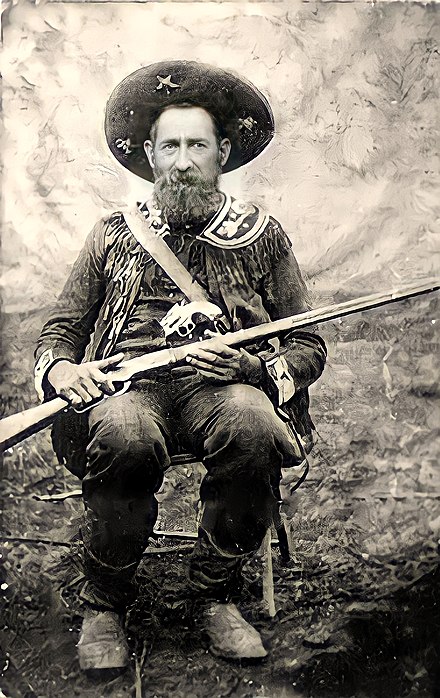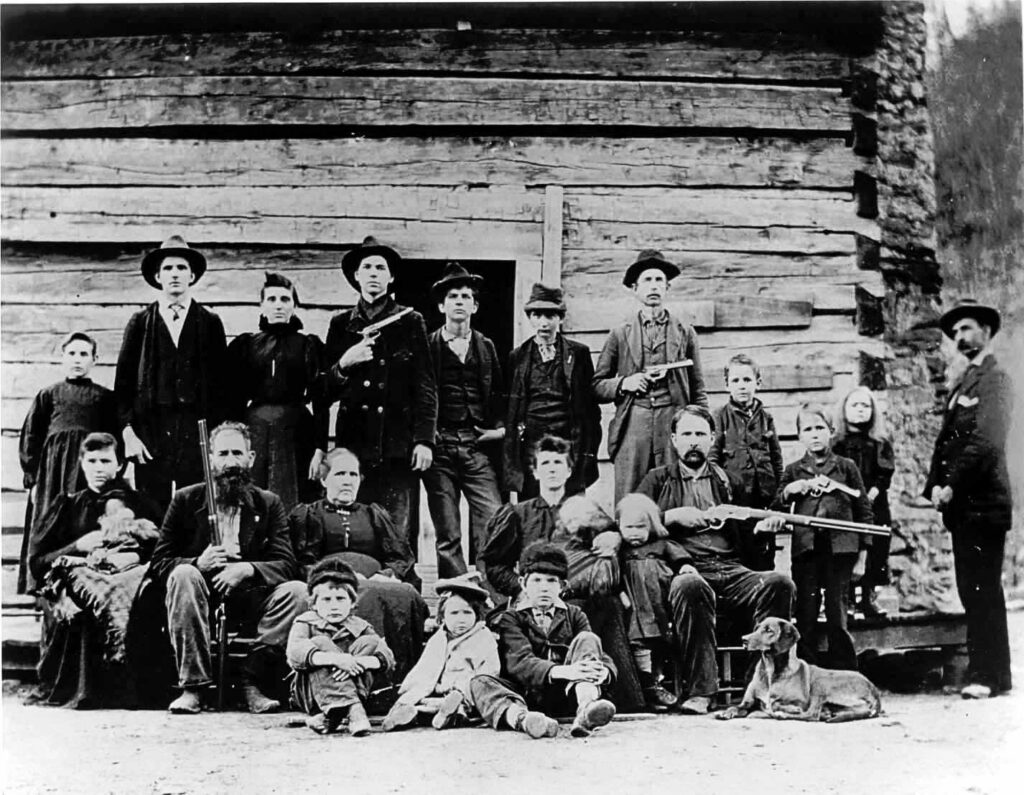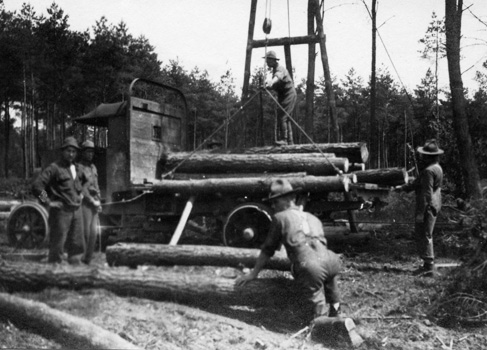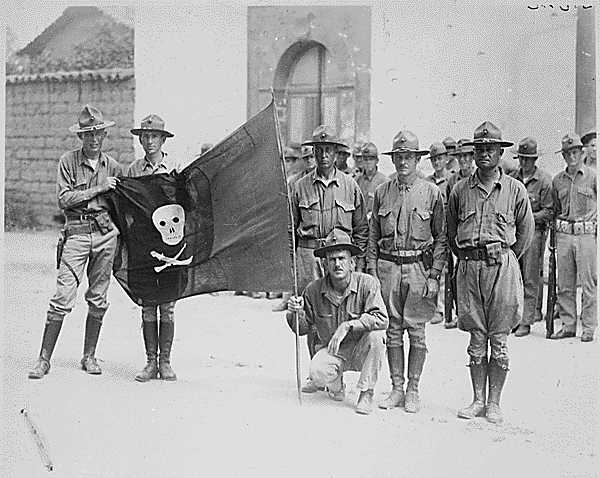The feudal families Hatfield and McCoy became famous for a nearly three-decades-long feud (1863- 1891). Both families largely fought in the Civil War in support of Jefferson Davis’s Confederate South, and both families had land in Kentucky and West Virginia. The McCoys lived on the west side of the Tug Ford branch of the Big Sandy river, while the Hatfields occupied land in Virginia to the east.
To bring the “who done it” statements to the front of the story, Asa, son of Randolph McCoy, was the only person out of both families who actually served on the Billy Yank Union side of the Civil War. A goodly number of folks in both states were also infuriated by the participation of a McCoy with the Union rather than the Confederacy.

(William Anderson “Devil Anse” Hatfield was the patriarch of the Hatfield clan during the years of feud with the McCoys)
In June 1865, while recovering from wounds suffered in the war, Asa McCoy was killed by the Logan Wildcats, a Confederate organization led by Devil Anse Hatfield. There is no official record of who actually killed Asa; his compiled military service record states only that he was “killed by rebels.” The McCoy family by and large believe that it was Devil Anse Hatfield and a couple of Confederate constituents who were guilty of the shooting death of Asa McCoy, and that’s where it stands today. Asa McCoy was the first fatality of the 30-year long feud.
Thirteen years after the alleged Hatfield shooting of Asa McCoy, the two families had already placed themselves in a dire state by suing each other over various quibbles such as land and timber rights and illicit moonshine. In the same year, while visiting a Hatfield range, McCoy patriarch Randolph McCoy noted a distinct McCoy brand on one of the Hatfield pigs, accusing him of the theft of the swine.
Related: War Animals: The surprising variety of animals used in modern warfare

The trial over the pig was long and arduous due to the large extended families and the convoluted loyalties to the two different families. In the end, the judge, who was associated with both families, ruled the great pig caper in favor of the Hatfields based on key testimony from Bill Staton, a friend of both families. Bill Staton was promptly hunted down by two McCoy brothers who were subsequently acquitted by a ruling of self-defense.
The feud escalates

In August 1882, an election was held near the house of Jerry Hatfield. A physical altercation ensued between three McCoy brothers and two young men from the Hatfield clan. One of the Hatfield men was stabbed and shot in a ruthless act of murder. The three McCoy brothers were captured by the Hatfields and outright executed in what is known as the “Pawpaw tree incident” suffering execution-style death at the hands of a Hatfield vigilante justice.
In1888, the feud reached new heights with the New Year’s Night Massacre. Hatfields encircled the McCoy Cabin and opened fire with rifles. They awaken the McCoys who then returned fire on the Hatfields. The cabin was then set on fire by the Hatfields.
Two young McCoy children were killed by gunfire, with Randolph McCoy’s own wife being shot and beaten almost to death. All surviving McCoys managed to escape into the wilderness behind the burning cabin and eventually returned to safety.
Soon, Kentucky and Virginia threatened to deploy state military forces against the families. Yet, time heals all, and the feud started to subside.
Nevertheless, the feud between the two families has lived on in American vocabulary to this day.
Related: 7 of the Best Military-song Playlists You’ll Find on Spotify
‘Feud’n like the Hatfields and McCoys’

Who can forget hearing this Country and Western testament to the family feud:
“Let’s go to Luckenbach Texas, with Waylon and Willie and the boys
The successful life we’re livin’ got us feud’n like the Hatfields and McCoys.”
Family feuds… you can bet they have been around as early as when one family bought a land plot next to another family. That’s how it was for the Hatfields and McCoys, even though both families lived on opposite sides of a large river they still had the wherewithal to hate each other.
Even in my own neighborhood, I’ll bet there are at least nine pairs of feuding families. They are not quite at the level of busting caps from Winchester/Henry repeaters at each other, but there is surely enough noise and commotion coming from their houses. And the police… they have enough trips under their belts responding to neighbors clad in PJs swinging frying pans and rolling pins out in the middle of the late evening street.
World gone mad, I tells ya!
By Almighty God and with honor,
geo sends



